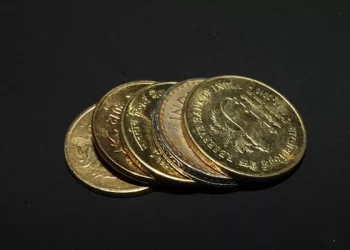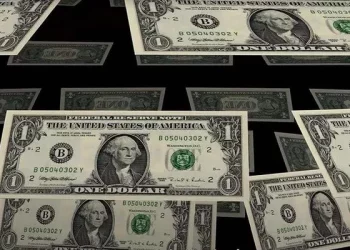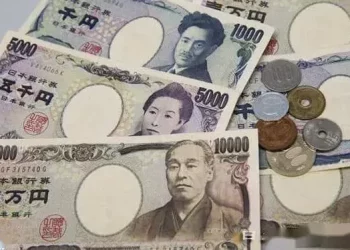The foreign exchange (forex) market is one of the largest and most liquid financial markets in the world, with trillions of dollars traded every day. One of the most common transactions in the forex market is the conversion between different currencies. If you’ve ever found yourself asking, “How much is 500 USD in Indian Rupees (INR)?” you’re not alone. This is a question many people ask when engaging in international trade, travel, or investment, as the value of the US Dollar (USD) against the Indian Rupee (INR) can fluctuate over time.
In this article, we’ll explore various aspects of this currency conversion, including the factors that influence the exchange rate, the current conversion value, historical trends, and strategies for trading in the forex market. By the end of this article, you will have a deeper understanding of how currency conversion works and how you can use this knowledge for financial decision-making.
Understanding Currency Exchange Rates
Before diving into how much 500 USD is in Indian Rupees, it’s important to understand what an exchange rate is and how it works. An exchange rate is the value of one country’s currency in relation to another currency. In this case, the exchange rate tells you how many Indian Rupees you will receive in exchange for 1 US Dollar. The rate fluctuates based on various factors, such as supply and demand, interest rates, inflation, and geopolitical events.
Exchange rates are determined in the global forex market, where currencies are traded by banks, financial institutions, corporations, and individual traders. The forex market is highly liquid, and its rates can change rapidly due to the constant flow of money being exchanged between countries.
How Much is 500 USD in Indian Rupees?
As of the most recent exchange rate, 1 USD is approximately equal to 83 INR. However, this value can fluctuate based on various factors. To calculate how much 500 USD is in Indian Rupees, we simply multiply the amount of USD by the exchange rate:
500USD×83INR/USD=41,500INR
So, at the current exchange rate of 1 USD = 83 INR, 500 USD would be equivalent to 41,500 Indian Rupees.
Factors That Influence the Exchange Rate Between USD and INR
Several factors affect the exchange rate between the US Dollar and the Indian Rupee. These factors can cause fluctuations in the exchange rate, sometimes leading to significant changes in the value of 500 USD in INR over a short period of time. Some of the most important factors include:
1. Interest Rates
Interest rates play a crucial role in determining exchange rates. When a country’s central bank raises its interest rates, it typically leads to an increase in demand for its currency, as investors seek higher returns on investments. For instance, if the Reserve Bank of India (RBI) raises interest rates, it could attract foreign capital inflows into Indian assets, leading to an appreciation of the INR relative to the USD. Conversely, if the Federal Reserve (the US central bank) increases interest rates, it could make the USD more attractive to investors, leading to a stronger dollar and a weaker INR.
2. Inflation Rates
The inflation rate of a country also has a significant impact on the exchange rate. A higher inflation rate in India compared to the US can result in a depreciation of the INR relative to the USD. This is because inflation erodes the purchasing power of a currency, and investors may choose to sell currencies that are losing value due to inflationary pressures. Conversely, lower inflation in India compared to the US can lead to an appreciation of the INR against the USD.
3. Economic Performance
The economic health of a country is another key driver of exchange rate movements. A country with strong economic growth, low unemployment, and a high standard of living is more likely to have a strong currency. If India’s economy is performing well and growing at a healthy pace, it could lead to a stronger INR against the USD. On the other hand, economic instability, slow growth, or a recession can cause the INR to weaken against the USD.
4. Political Stability
Political factors, such as elections, government policies, and geopolitical events, can significantly impact the value of a currency. For example, political instability in India, such as civil unrest or uncertainty over government policies, can cause investors to sell their Indian assets and move their money to safer currencies like the USD. This can lead to a decline in the INR’s value against the USD. Conversely, a stable political environment with pro-business policies can attract foreign investment, which could strengthen the INR.
5. Trade Balance
A country’s trade balance—whether it exports more than it imports—also affects the value of its currency. If India exports more goods and services than it imports, there will be increased demand for the Indian Rupee, which could lead to an appreciation of the INR. On the other hand, if India imports more than it exports, there may be less demand for the INR, which could cause it to weaken relative to the USD.
6. Foreign Exchange Reserves
The foreign exchange reserves held by a country’s central bank also play a role in determining its currency value. If the Reserve Bank of India has large reserves of foreign currencies, it can use these reserves to stabilize the INR in times of volatility. On the other hand, low reserves may make the INR more vulnerable to fluctuations, especially if there is a sudden outflow of capital from the country.
Historical Trends in the USD/INR Exchange Rate
To understand how much 500 USD in Indian Rupees has changed over time, it’s helpful to look at historical exchange rates between the USD and INR. Over the past few decades, the value of the INR has generally depreciated against the USD, but there have been periods of volatility.
For example, in the early 1990s, the exchange rate was approximately 17-18 INR for 1 USD. However, the value of the INR gradually declined due to factors such as economic liberalization, increased demand for foreign goods and services, and rising oil prices. By the early 2000s, the exchange rate had crossed 40 INR per USD.
In recent years, the exchange rate has fluctuated between 60-75 INR per USD, with occasional spikes due to economic or geopolitical factors. As of late 2024, the exchange rate is hovering around 83 INR per USD, which marks a significant depreciation of the INR compared to previous decades.
The Role of the Forex Market in Currency Conversion
When you want to convert 500 USD into Indian Rupees, the process typically involves buying INR with USD in the forex market. The forex market is a decentralized marketplace where currencies are traded globally. Major financial institutions, such as central banks, commercial banks, and hedge funds, are the largest players in the market. However, individual traders and investors can also participate by using forex brokers.
In the forex market, currencies are typically traded in pairs. The USD/INR pair represents the exchange rate between the US Dollar and the Indian Rupee. The price of this pair fluctuates based on the supply and demand for each currency. If more people are buying INR, the price of the USD/INR pair will fall, and the INR will strengthen against the USD. Conversely, if there is more demand for USD, the price of the USD/INR pair will rise, and the INR will weaken.
Currency Conversion for Travelers and Businesses
If you are planning to travel to India or conduct business with Indian companies, understanding the conversion rate between USD and INR is essential. For travelers, knowing how much 500 USD is in INR allows you to budget for expenses such as accommodation, food, and transportation in India. Many currency exchange services, such as banks and currency exchange kiosks, will offer you the current exchange rate when you convert your money into INR.
Businesses that engage in international trade or investment must also understand currency conversion to manage costs and profits effectively. For example, if an American company exports goods to India and receives payment in INR, it will need to convert those rupees into USD. The exchange rate at the time of conversion will affect the company’s profits and pricing strategy.
Strategies for Forex Traders
Forex traders who focus on the USD/INR pair may be interested in taking advantage of exchange rate fluctuations. Traders use a variety of strategies to profit from changes in the value of currencies, including technical analysis, fundamental analysis, and risk management techniques.
Technical Analysis: Traders use charts and historical price data to identify patterns and trends in the USD/INR exchange rate. By studying past price movements, they can make predictions about where the currency pair is likely to go in the future.
Fundamental Analysis: This involves studying economic indicators, interest rates, inflation rates, and other macroeconomic factors that influence the exchange rate. Traders use this information to assess the relative strength of the USD and INR and make informed trading decisions.
Risk Management: Forex trading involves significant risk, so traders must use risk management tools such as stop-loss orders, position sizing, and diversification to protect their investments. Understanding the volatility of the USD/INR pair is essential for managing risk effectively.
Conclusion
The question of how much 500 USD is in Indian Rupees is a simple one, but it can have far-reaching implications depending on the context. Whether you are a traveler, a businessperson, or a forex trader, understanding the exchange rate between the US Dollar and the Indian Rupee is essential for making informed financial decisions.
The value of 500 USD in INR can fluctuate based on a variety of factors, including interest rates, inflation, economic performance, political stability, and more. As of the most recent exchange rate, 500 USD is approximately equal to 41,500 INR. However, this value can change frequently, making it important to stay updated on currency exchange rates if you plan to engage in international transactions or trading.
In the fast-paced world of forex trading, even small fluctuations in the USD/INR exchange rate can present opportunities for profit. Understanding the underlying factors that drive exchange rate movements and employing effective strategies can help traders navigate the complexities of the forex market.
Ultimately, whether you are converting currency for travel or conducting business across borders, the exchange rate between USD and INR will continue to play a crucial role in your financial decisions. By staying informed and understanding the forces that shape currency values, you can make more educated choices when it comes to currency conversion.
Related Topics:

























